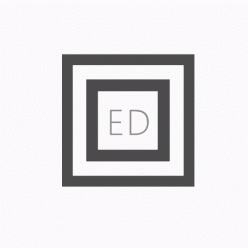Mood Boards and Art
Beginning the process of this character design, I wanted to achieve a sort of imperfect, ‘crooked’ type of look that did not appear too dishevelled. Turning to interest, I found two references in which I really aesthetically appreciated the way they had a specific charm and character to them, colour-wise but also shape-wise. Specifically looking at the roof tiling, I really wanted to explore how to create this effect in 3D in a more detailed way to counter-balance the simplicity of the overall ‘facial’ design.


As shown below in my character concepts, I explored facial expression translated into anthropomorphized housing, using the door to effectively replicate the mouth by placing it horizontally and trying to place a window to give the impression of a nose. A key stylistic choice I really want to push within the realms of my film, and in particular, this character design, is this imperfect element of architectural structures and how they replicate the imperfection of humans. To accentuate this for this particular character, I want to create a messy tiled look to the roof to implicate ‘messy hair’ and slanted windows to indicate imperfect noses. The crooked chimney, I feel, also adds an element of stylistic impression, and I want to utilise chimney smoke to highlight expression in the characters (e.g. puffing smoke when angry).

3D Modelling
Beginning to translate this model into 3D space, I tried to start trying to figure out proportionally how I would balance the body and the legs in a way that accentuated stylisation and behaved unrealistically but within the realms of realistic previewing. I also feel this aesthetic choice allows space for interesting weight portrayal within the actual character animation.

Below indicated the first application of the toon shader, in which I was trying to see: a) how it would work as a texture going forward for all the individual characters.
B) How, when using the shader, I would accentuate lines within the combined mesh.
I found when separating different elements of the mesh into groups, I was able to retain the detailed information of each object and have them clearer outlined to build more detail within the model without sacrificing the flatter, shaded look.

When beginning the process of modelling the roof, I was struggling to find an effective method to best place the tiles in a way that did not create mesh collisions and, overall, really wanted to push for the detail in this area. Researching tutorials on youtube, I found a very helpful one that illustrated a clear way to create that more detailed but simplistically stylised look I was aiming to achieve exactly.


Applying this method going forward, I was able to create a more effective and detailed roof which looked exactly how I wanted aesthetically and helped me create a method to apply to the other 5 models later on down in the production pipeline.

It felt essential also to add details which would really sell the model as a house, such as chimneys and TV antenna. I also feel with the addition of these objects, I will potentially be able to explore additional secondary animation later on that will help ‘flourish’ the character’s movements (Such as the antenna flicking etc).

An aspect that felt incredibly important to consider early on within this character creation process was understanding exactly how the door would work in place of a mouth. Recalling rigging techniques I have previously learned, I froze the transforms, changed the pivot location and tried to replicate how the mouth would operate when preparing for spoken mimesis.

Below showcases the completed model, which I think reflectively works well aesthetically for what I want to achieve for my film. However, in terms of modelling techniques, I think in future, I will try to create a neater system for tile placement so that it can look slightly more orderly with less collision. I also feel I would add more brick detailing, given the time to try and flesh out a more three-dimensional texture.

Improved Colours:
Retrospectively looking back on the colour scheme of the model, it indicated several issues as it relied solely on the colours being projected from the lights in the scene. I wanted to stick with a blue thematic colour scheme for this model so that it contrasts with the environment and the other characters to be modelled later on.

Goals for Next Week:
- Design Character 2
- Model Character 2
